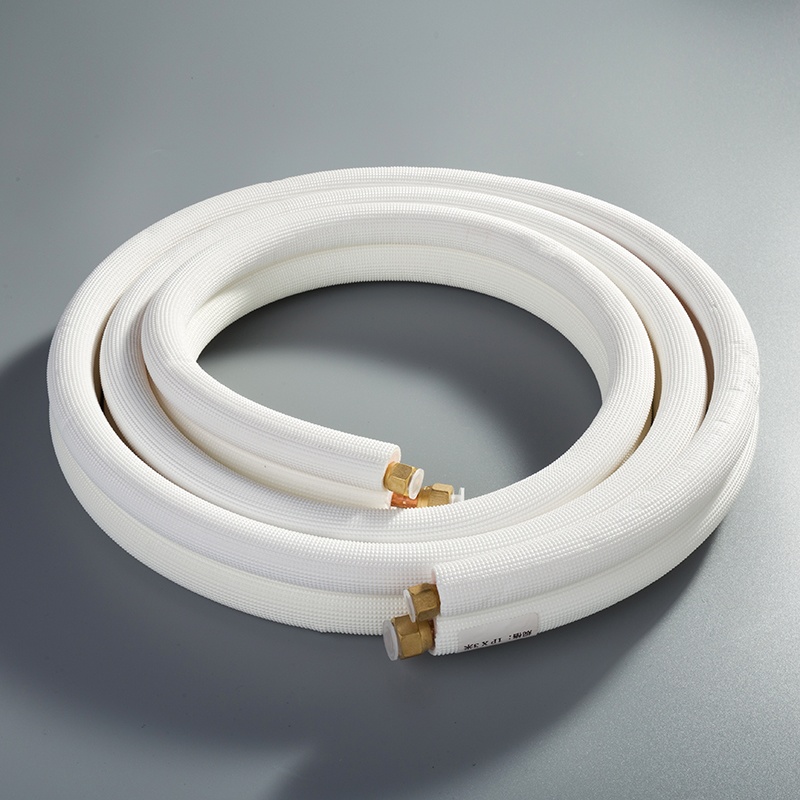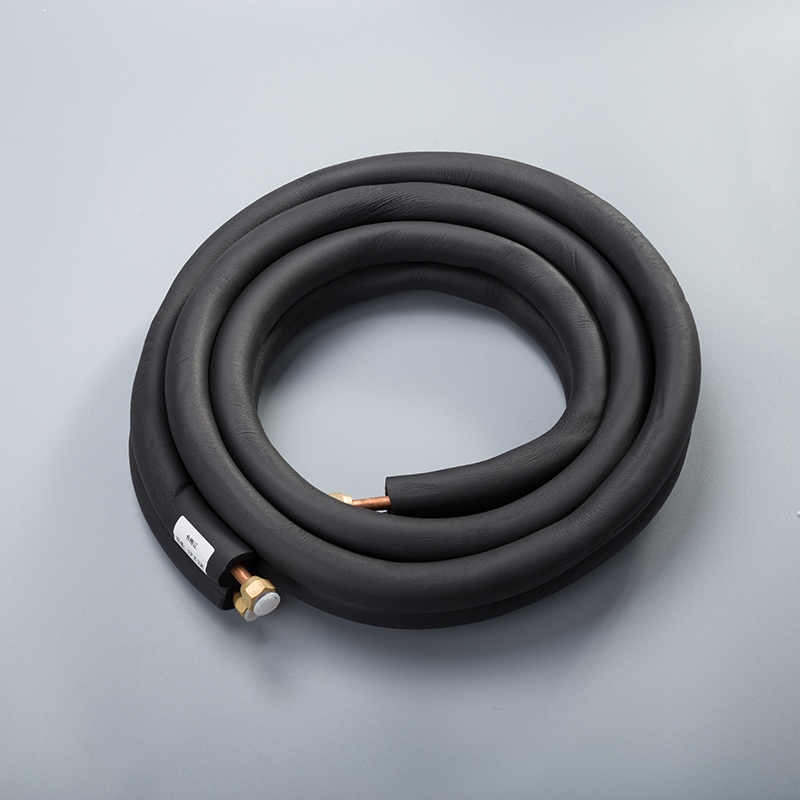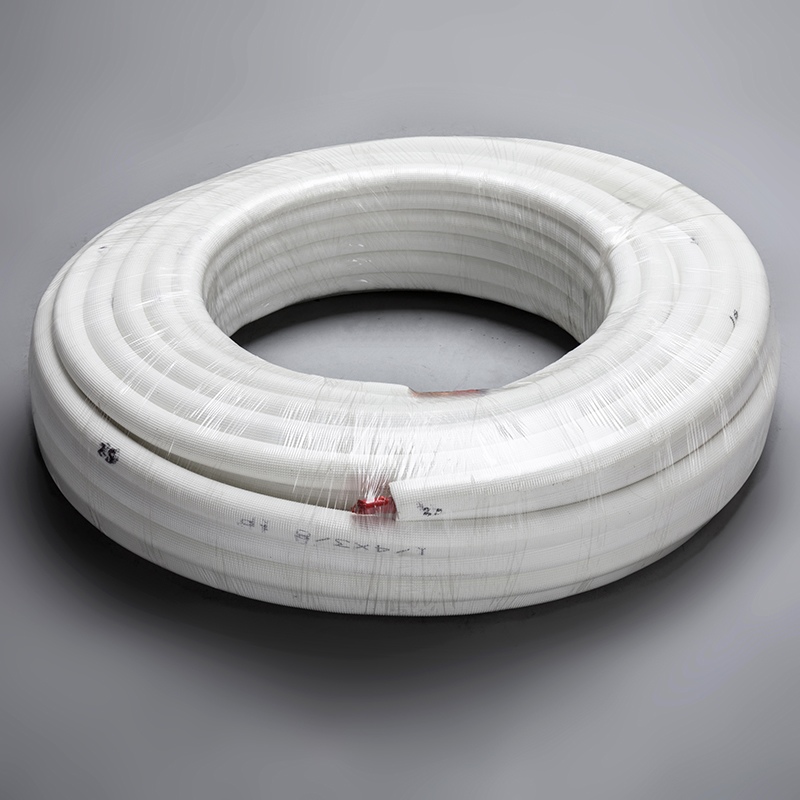Understanding the Types of Copper Pipes for AC Systems

In the realm of air conditioning systems, copper pipes for air conditioning accessories stand as essential components, revered for their durability and efficient heat transfer properties. As consumer preferences shift towards sustainable solutions, the adoption of copper pipes in HVAC applications has surged. These pipes not only ensure reliable performance but also extend the lifespan of systems by resisting degradation over time. This blog aims to enlighten readers on the diverse types and uses of copper pipes in AC systems, guiding them towards informed decisions for optimal functionality.
Overview of Copper Pipes in AC Systems
Importance of Copper Pipes
Copper pipes for air conditioning accessories are renowned for their exceptional durability and longevity. Unlike alternative materials, copper pipes exhibit unmatched thermal conductivity and robustness, ensuring prolonged performance in AC systems. The utilization of copper pipes guarantees efficient heat transfer, contributing to the overall effectiveness of air conditioning units.
Common Applications in AC Systems
In the realm of air conditioning systems, copper pipes find extensive use in refrigerant lines and water supply lines. The high-pressure-rated Type L copper tubing, specifically designed for HVAC applications, is commonly employed for refrigerant lines due to its superior quality and reliability. Moreover, the efficient Mexflow copper pipe by Mehta Tubes Limited is favored for its optimal performance in air conditioning systems.
Types of Copper Pipes

Type K Copper Pipes
Characteristics:
Type K copper pipes are commonly used for interior plumbing, fire protection, and some HVAC applications.
Available in both rigid and flexible forms, Type K is considered the most common type of copper piping due to its versatility.
Thicker than Type L but thinner than Type M, Type K copper pipes offer a balance between durability and flexibility.
Common Uses:
Interior Plumbing:
Type K copper pipes are extensively utilized in interior plumbing systems for their reliability and longevity.
The robust nature of Type K pipes ensures long-term performance in various plumbing applications.
Fire Protection:
In fire protection systems, Type K copper pipes play a crucial role in ensuring the efficient flow of water for firefighting purposes.
The durability of Type K tubing makes it a preferred choice for critical fire safety installations.
HVAC Applications:
Within HVAC systems, Type K copper pipes find specific applications where a balance between strength and adaptability is required.
The thermal conductivity of Type K tubing enhances heat transfer efficiency in air conditioning units.
Type L Copper Pipes
Characteristics:
Widely used across different applications, including plumbing and HVAC systems, Type L copper pipes possess specific attributes that cater to distinct requirements.
Known for their excellent thermal conductivity, durability, and corrosion resistance, Type L tubing stands out as a reliable choice for various industries.
Common Uses:
Air Conditioning Systems:
"Copper pipes are commonly used in air conditioning systems for their excellent thermal conductivity..."
Refrigerant Flow Systems:
"They are an integral part of the refrigerant flow system..."
Plumbing Systems:
"Suitable for hot and cold water supply lines..."
Type M Copper Pipes
Characteristics:
Primarily employed in residential plumbing setups, Type M copper pipes serve as essential conduits for water distribution within homes.
Designed to withstand varying pressures and temperatures, Type M tubing offers a reliable solution for domestic water supply needs.
Common Uses:
Residential Plumbing Systems:
In residential settings, Type M copper pipes facilitate the distribution of both hot and cold water efficiently.
From supplying water to sinks to feeding showers and toilets, Type M tubing supports diverse household requirements.
ACR Copper Pipes
Characteristics
ACR copper pipes, also known as Air Conditioning and Refrigeration copper pipes, are specifically designed for HVAC applications. These pipes exhibit exceptional durability and corrosion resistance, ensuring reliable performance in air conditioning systems. The high-quality copper material used in ACR pipes guarantees optimal thermal conductivity, facilitating efficient heat transfer within AC units.
Superior Durability: ACR copper pipes are engineered to withstand varying environmental conditions and pressures, making them ideal for long-term use in HVAC setups.
Corrosion Resistance: The corrosion-resistant properties of ACR pipes prevent degradation over time, maintaining the integrity of air conditioning systems.
Optimal Thermal Conductivity: With their excellent thermal conductivity, ACR copper pipes enhance heat transfer efficiency, contributing to the overall effectiveness of AC units.
Common Uses
Air Conditioning Systems:
ACR copper pipes play a vital role in air conditioning systems by ensuring the seamless flow of refrigerants throughout the unit.
These pipes are integral components that support the cooling process and help maintain optimal performance levels.
Refrigeration Applications:
In refrigeration systems, ACR copper pipes are utilized for their reliability and efficiency in transporting refrigerants.
The durable nature of these pipes makes them well-suited for maintaining consistent cooling functions.
HVAC Installations:
Within HVAC installations, ACR copper pipes serve multiple purposes, from refrigerant flow lines to heat exchange components.
Their versatility and robust characteristics make them essential elements in various HVAC configurations.
Choosing the Right Copper Pipe for Your AC System

Factors to Consider
System Requirements
When selecting copper pipes for air conditioning accessories, it is crucial to assess the specific system requirements. Understanding the operational needs of your AC system will guide you in choosing the most suitable copper pipe type. Different systems may demand varying levels of pressure resistance and thermal conductivity, influencing the ideal copper pipe selection.
Environmental Conditions
Another vital factor to consider when deciding on copper pipes for air conditioning accessories is the environmental conditions in which the AC system will operate. Factors such as temperature fluctuations, humidity levels, and exposure to external elements can impact the performance and longevity of copper pipes. Evaluating these environmental aspects ensures that the chosen copper pipes can withstand and function optimally under prevailing conditions.
Recap of Copper Pipe Varieties:
Highlighting the diverse range of copper pipes, including Type K, Type L, Type M, and ACR copper pipes.
Each type offers unique characteristics catering to specific applications in HVAC systems.
Importance of Precision Selection:
Choosing the appropriate copper pipe is crucial for optimal performance and longevity.
The right selection ensures efficient heat transfer and system durability.
Final Recommendations:
Prioritize selecting copper pipes based on system requirements for enhanced functionality.
Consider the resilience against corrosion and wear under demanding conditions for long-term benefits in air conditioning systems.
See Also
Benefits of Opting for Copper Tubing in AC Systems
Exploring the Wonders of Copper Tubing in AC Units
The Importance of Copper Tubing for Effective AC


